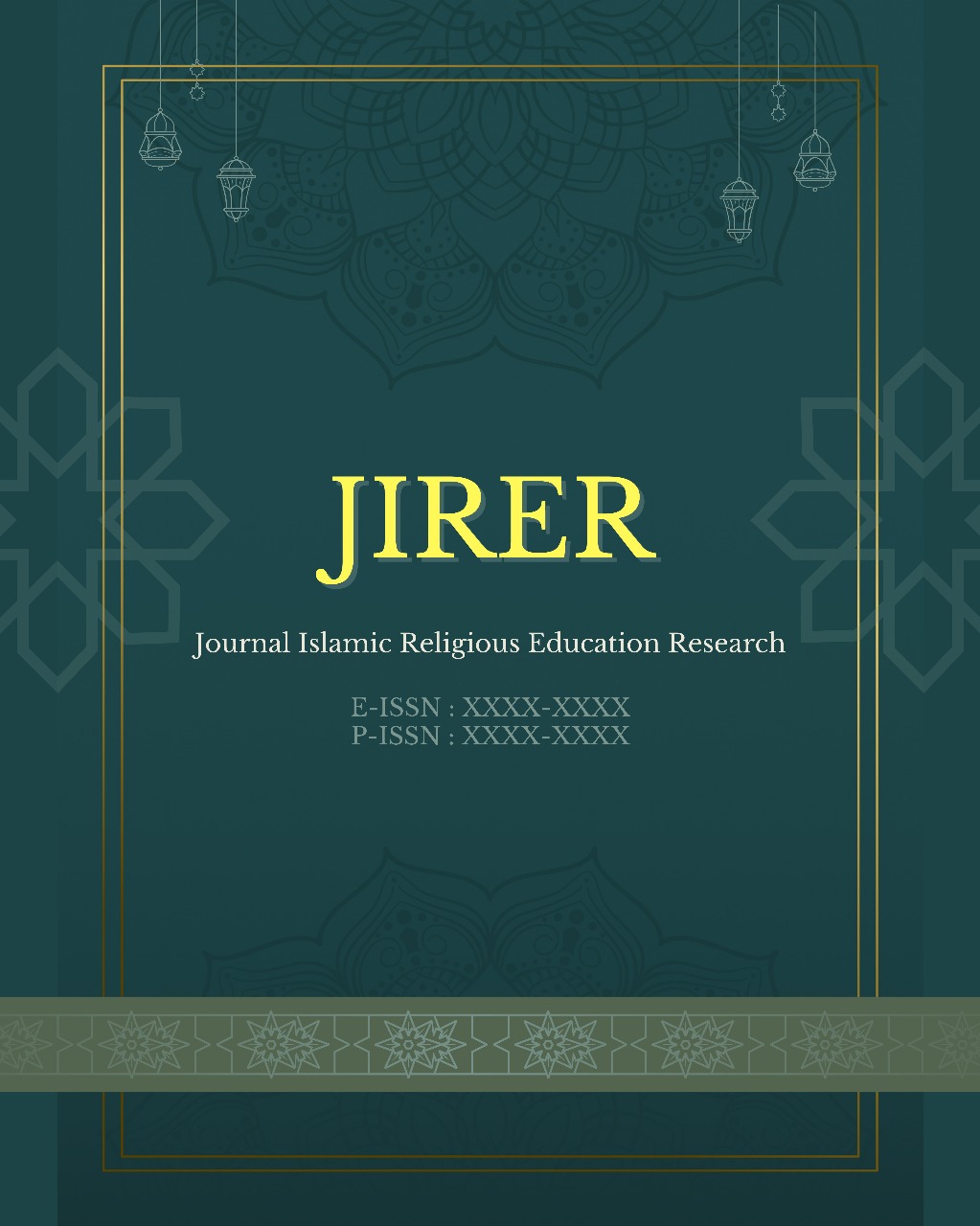Brainstorming Method to Improve English Vocabulary Mastery among Midwifery Students at a Private Pesantren-Based University
Keywords:
Active Learning, Brainstorming, English Vocabulary, Midwifery students, Pesantren UniversityAbstract
Vocabulary mastery is the main key in learning English, especially for midwifery students who are expected to be able to communicate effectively in a health context. This study aims to evaluate the extent to which the brainstorming method can improve English vocabulary mastery among midwifery students at a private university based on the pesantren system. This study applied a quantitative approach with a pre-experimental design using a one-group pretest-posttest model. A total of 20 second-semester female students from the D3 Midwifery study program were involved as participants. Data were collected through vocabulary tests, observation sheets, and student perception questionnaires. The results showed that there was a significant increase in participants' vocabulary ability after learning with the brainstorming method. This finding indicates that brainstorming not only enriches vocabulary but also helps to increase students' confidence in the use of English. Therefore, the integration of this method is suggested as a relevant active learning strategy, especially in the context of pesantren-based education.
References
Al-Mutairi, A. N. M. (2015). The effect of using brainstorming strategy in developing creative problem-solving skills among male students in Kuwait: A field study on Saud Al-Kharji School. Journal of Education and Practice, 6(3), 136–145. https://eric.ed.gov/?id=EJ1083780
Al-Saqriah, R., & Kazem, A. (2023). Using electronic brainstorming strategy in a blended learning environment on grade-eleven female students' moral reasoning in Islamic education. Jordan Journal of Educational Sciences, 19(1), 55–70. https://jjes.yu.edu.jo/index.php/jjes/article/view/136
Amoush, K. H. (2015). The impact of employing brainstorming strategy on improving writing performance of English major students at Balqa Applied University in Jordan. Journal of Education and Practice, 6(35), 88–92. https://eric.ed.gov/?id=EJ1086359
Anthony, L. (n.d.). Introducing English for specific purposes. Academia.edu. https://www.academia.edu/41582808/Introducing_English_for_Specific_Purposes
Cattaneo, K. H. (2017). Telling active learning pedagogies apart: From theory to practice. Journal of New Approaches in Educational Research, 6(2), 144–152. https://doi.org/10.7821/naer.2017.7.237
Demirci, C., & Akcaalan, M. (2020). Active learning: English language teaching via write share learn strategy. International Journal of Educational Research Review, 5(2), 147–155. https://dergipark.org.tr/en/pub/ijere/article/732948
Getie, A. S. (2020). Factors affecting the attitudes of students towards learning English as a foreign language. Cogent Education, 7(1), 1738184. https://doi.org/10.1080/2331186X.2020.1738184
Ginting, D. (2021). Student engagement and factors affecting active learning in English language teaching. VELES: Voices of English Language Education Society, 5(2), 231–245. https://e-journal.hamzanwadi.ac.id/index.php/veles/article/view/3968
Hidayanti, W. I., Rochintaniawati, D., & Agustin, R. R. (2018). The effect of brainstorming on students' creative thinking skill in learning nutrition. Journal of Science Learning, 1(2), 68–72. https://eric.ed.gov/?id=EJ1226327
IL-Hub. (n.d.). English for specific purposes / English for academic purposes. EPGP – INFLIBNET. https://epgp.inflibnet.ac.in/epgpdata/uploads/epgp_content/linguistics/english_language_teaching/06._esp_and_eap/esp_and_eap.pdf
Kotb, A. G. (2016). Effect of brainstorming program on teaching skills for student teachers. Journal of Applied Sports Science, 6(2), 145–153. https://jassalexu.journals.ekb.eg/article_84542.html
Lombardi, D., Shipley, T. F., & Rowe, M. P. (2021). The curious construct of active learning. Psychological Science in the Public Interest, 22(1), 1–28. https://doi.org/10.1177/1529100620973974
Malkawi, N. A. M., & Smadi, M. (2018). The effectiveness of using brainstorming strategy in the development of academic achievement of sixth grade students in English grammar at public schools in Jordan. International Education Studies, 11(3), 92–102. https://eric.ed.gov/?id=EJ1172133
Miani, M. (2023). Making sense of brainstorming in transnational education: The challenge of contextualization. In C. Zhang (Ed.), Trends and future directions in transnational higher education (pp. 88–102). IGI Global. https://www.igi-global.com/chapter/making-sense-of-brainstorming-in-transnational-education/316903
Namaziandost, E., Neisi, L., Kheryadi, & Nasri, M. (2019). Enhancing oral proficiency through cooperative learning among intermediate EFL learners: English learning motivation in focus. Cogent Education, 6(1), 1683933. https://doi.org/10.1080/2331186X.2019.1683933
Omidvari, A., & Abedianpour, S. (2018). Brainstorming strategy and writing performance: Effects and attitudes. Journal of Language Teaching and Research, 9(3), 582–588. https://search.proquest.com/openview/68357fa9d0fb2747e7833eaf50957a96/1?pq-origsite=gscholar&cbl=136091
Peace Corps. (1968). Teaching English for specific purposes. Peace Corps. https://files.eric.ed.gov/fulltext/ED001288.pdf
Strevens, P. (1978). English for specific purposes: An international survey. In H. B. Allen & R. N. Campbell (Eds.), Teaching English as a second language (pp. 1–14). British Council. https://www.teachingenglish.org.uk/sites/teacheng/files/pub_ELT-35-English_for_Specific_Purposes.pdf
Susanto, B., Wajdi, M., & Sariono, A. (2022). Observing English classroom in the digital era. Journal of Language and Pedagogy Studies, 1(1), 1–9. https://jurnal.ympn2.or.id/index.php/JLPS/article/view/1
Tsai, M. N., Liao, Y. F., Chang, Y. L., & Chen, H. C. (2020). A brainstorming flipped classroom approach for improving students' learning performance, motivation, teacher-student interaction and creativity in civics education. Thinking Skills and Creativity, 37, 100689. https://www.sciencedirect.com/science/article/pii/S1871187120302212
Unin, N., & Bearing, P. (2016). Brainstorming as a way to approach student-centered learning in the ESL classroom. Procedia - Social and Behavioral Sciences, 224, 605–612. https://www.sciencedirect.com/science/article/pii/S1877042816305353
UsingEnglish.com. (n.d.). Teaching English for specific purposes. https://www.usingenglish.com/articles/teaching-english-for-specific-purposes.html
Widiastuti, I. A. M. S., Murtini, N. M. W., & Sariyati, L. (2022). Brainstorming as an effective learning strategy to promote students' critical thinking skills. Jurnal Pendidikan Progresif, 12(1), 12–20. https://jpp.fkip.unila.ac.id/index.php/jpp/article/view/511
Published
Data Availability Statement
The data supporting this study are not publicly available due to privacy, ethical, or institutional restrictions. Interested parties may contact the corresponding author to inquire about potential access under certain conditions.
Issue
Section
License
Copyright (c) 2025 JIRER JOURNAL ISLAMIC RELIGIOUS EDUCATION RESEARCH

This work is licensed under a Creative Commons Attribution-NonCommercial-ShareAlike 4.0 International License.






